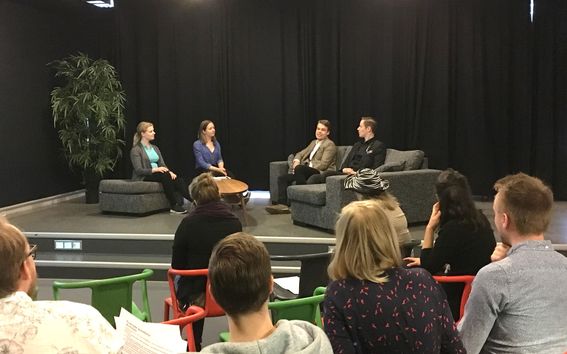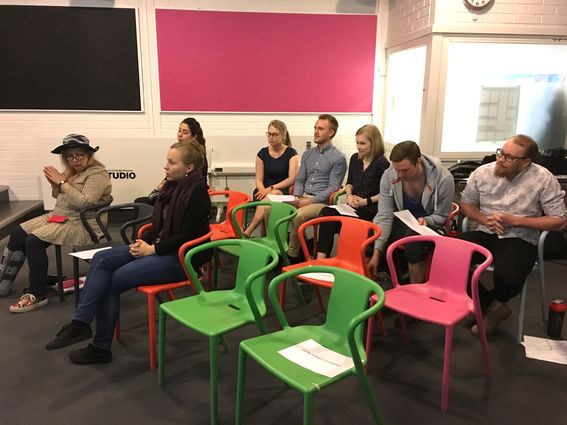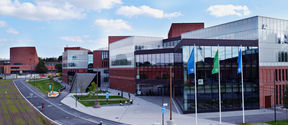The laboratory course uses elements of drama and invests in students’ initiative and team skills

Sellu ja Paperi Oy hires two expert groups to improve and diversify the products and processes of their factories. Later, the company organises a televised event where the experts present the results of their work and how they could be applied at the company's pulp mills in Huitsinnevada and Läsäkoski. The experts then answer questions from journalists, local business representatives, environmental activists and concerned locals.
So, what is this all about?
‘This is the Biomass Pretreatment and Fractionation - in Laboratory course, which is part of the Biomass Refining Master's Degree Programme at Aalto University School of Chemical Engineering,’ says University Lecturer Kyösti Ruuttunen.
The course covers the manufacturing of bioproducts such as pulp. In the past, the laboratory courses and work in this field have typically been closely defined with prescriptive guidelines. The course already included teamwork, but the team members typically shared out their tasks and performed them alone, after which the tasks were grouped together. In other words, you can’t really call it true teamwork.
‘I wanted to change this,’ says Ruuttunen. ‘I knew that Aalto's Design Factory organises courses that focus specifically on teamwork. I contacted the Design Factory and, together with Maria Clavert, who at the time worked as a Development Expert (she is now a Professor of Practice), we started to brainstorm and plan the course,’ he continues.
This is how Sellu ja Paperi Oy was born. Laboratory work that is done to meet the needs of a company, albeit fictional, is more meaningful than work done without context or purpose. The manufacturing of pulp and other bioproducts is still the core of the course, but the course also covers the by-products of pulp mills that could be used as raw materials for new products.
Teams Dustbusters and PatrikLainePahvi
The students formed two teams, one dealing with sawdust and the other with recycled corrugated boxes. They considered what kind of new products they could produce from these materials and designed their own laboratory tests accordingly.

The students staged their final course presentation at the Design Factor in a fictitious TV show. They explained how their research had progressed and what kind of results they had achieved. The students also had to be able to justify the benefits of the products they had developed and how they would be produced. Other students playing the roles of concerned citizens and environmental activists raised surprising or sceptical questions about the products and their manufacturing process’s environmental impact, costs, and employment effects.
‘When teaching the course, I sometimes play the role of Sellu ja Paperi Oy’s Research Director Ken Longworkinghours (Suurtyötunti). Of course, I also guide my students' work pedagogically so that when they graduate from here they will have knowledge of the basics of pulp manufacturing. But otherwise their work is now much freer,’ says Ruuttunen.
‘The course has already been implemented four times in partnership with the Design Factory. This requires a great deal of initiative, responsibility and teamwork skills from the students. Some students would like more traditional teaching and more guidance, but for the most part the course has received positive feedback. In any case, all of the above qualities are what students need when they move into working life,’ Ruuttunen continues.
According to Ruuttunen, including elements of drama has made the course more meaningful, but in his opinion, not all courses should be the same.
‘It is good if there are as many different courses available as possible, it keeps the students interested,’ he says.
- Published:
- Updated:
Read more news

DeployAI Partners Gather for Heart Beat Meeting in Helsinki
The European DeployAI project's partners gathered for the Heart Beat meeting hosted by Aalto University Executive Education in Helsinki.
Online AI course could boost study equality
Students at the School of Business believe that mastering Artificial Intelligence (AI) can be beneficial for both academic success and career prospects, as AI becomes increasingly integrated into daily life.
2 027 new students admitted to Aalto University’s Finnish, Swedish bachelor’s programmes
13 500 applied to Aalto University in Finland's spring joint application in 2024